Carnivorous Plants:
|
Classification
Phylogeny World Map Illustrations References |
| CP Book Library |
| CP Web Links |
2008-Apr-27 Florida panhandle, USA Back to 2008 Florida Trip
This site in Apalachicola National Forest contains many carnivorous plants, including transplanted VFs.
Venus flytraps share the same habitat
with Sarracenia leucophylla. This does not happen in the native North
Carolina.
Sarracenia leucophylla flowers
are pretty much done in this site also. Wait! Are these flowers showing
some "compass" tendency, all facing south? Or, it is just a coincidence?

Drosera
filiformis var. trayci with D. capillaris in the
background.
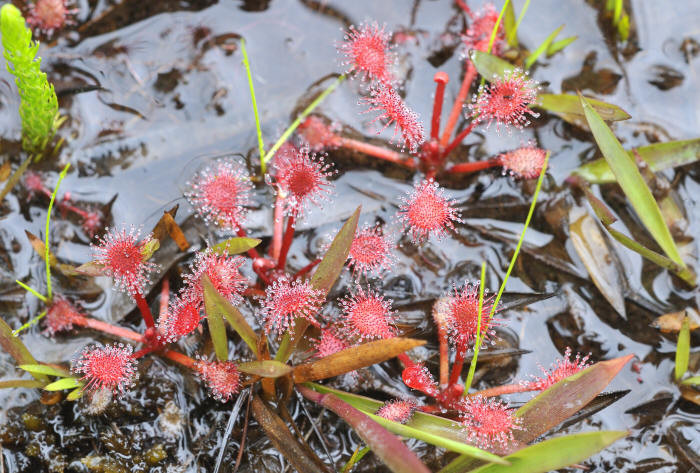
Morning dews
enhance the glandular expression of Drosera capillaris, well
tinted in bright red.
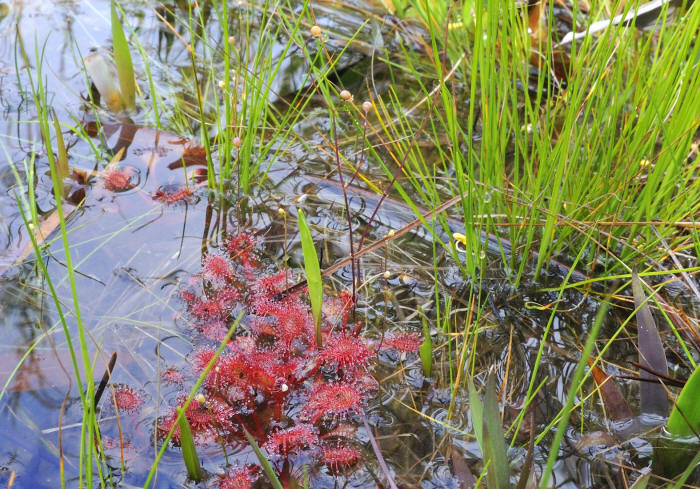
D. capillaris
shares a wet spot with a terrestrial bladderwort Utricularia
subulata. Note cleistogamous (closed) flowers of U. subulata,
supported on hair-thin flower stems.

An attractive,
bright yellow flower of Utricularia subulata.

Cleistes
bifaria blossom. An orchid occurring throughout the southeastern US,
typically found in acidic bogs and pine forests.
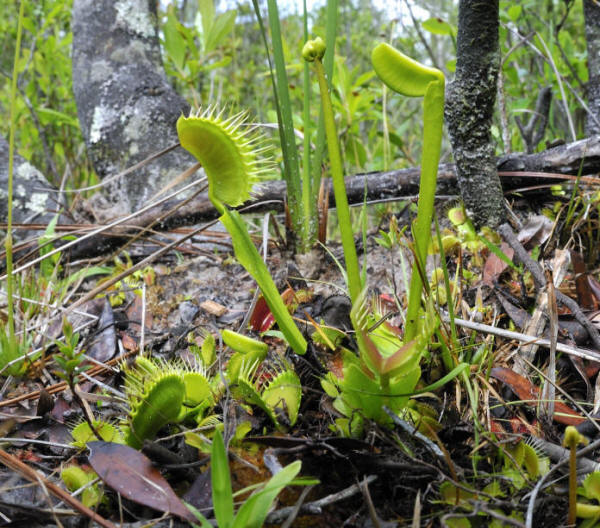
A Venus flytrap
tends to produce more erect, summer leaves around the time of flower.
Heavily red tinted
specimens are found sporadically scattered among more typically colored
plants. The color trait of the leaf blade seems to be genetically fixed.
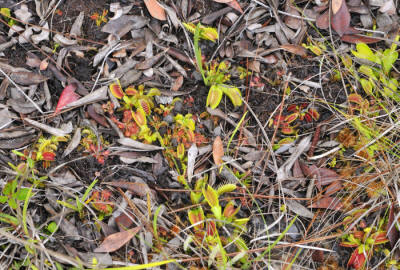
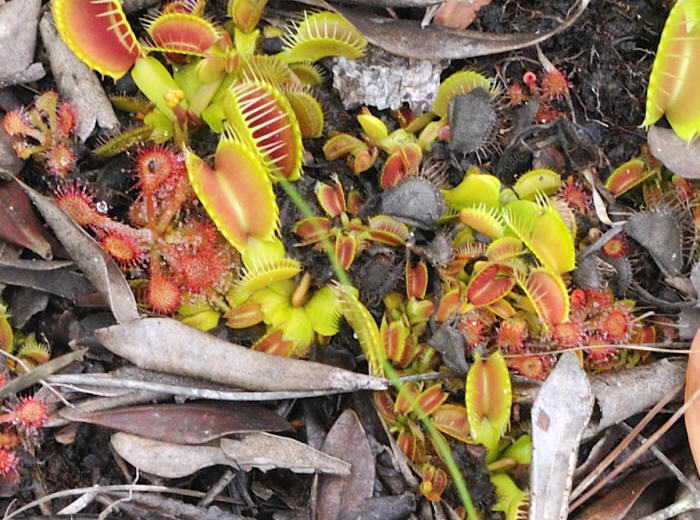
A Venus flytrap
colony appears well established in this Florida bog, judging from the
large number of seedlings found here.
Back to 2008 Florida Trip PHOTOS: Site01 Site02 Site03 Site04 Site05
| Carnivorous Plants Photography Web Site: Copyright © 2001-2018 Makoto Honda. All Rights Reserved. |